A Critical Viable Product™ (CVP) is a software development technique to build a version of a new product which allows a team to collect the critical amount of validated learning about the customer with the optimized effort.
Last night my 7 years old daughter asked “Dad, What do you like the most?” after reading her a bedtime story. I said, “I love you the most, Darling”. She hugged me and said “I love you too, Dad” and went on to ask again emphasizing “What do you LIKE the most?”. Wondering the difference she could make out between those two feelings, “I like reading books”, I said. She didn’t stop there. Asked again “Why do you like reading books?”.
My antennas stood up, I wanted to give her an answer that would really make an impact for her lifetime, as those were the very few moments she would ever listen to me with the fullest attention. (Dads out there — You know what I am talking about 😉
“I like reading books as it is the shortest way to learn a lot in a very few days, what the author of that book, learned and experienced for several years”, was my reply. And she asked, “Is it like how I learn from my teacher?” and I acknowledged with an accomplished feeling.
The Context
After getting back to my reading room, I chewed on my instant reply to her. And came the thought of what Eric Ries had to say about Minimum Viable Product — A Minimum Viable Product is that version of a new product which allows a team to collect the maximum amount of validated learning about customers with the least effort. The same goes for reading books, we get a maximum amount of validated learning with very least effort.

By looking at this definition one can obviously understand that validated learning can only come from, by delivering what customers want — and, importantly, easily understand there is a correlation between two parameters, validated learning (the value) and the effort (the cost).
The Problem
Coming from an engineering background, the next question came to my mind was what is the optimal effort needed to spend to get the required critical amount of validated learning. How to quantitively measure the value and cost? What is that sweet spot to call it a minimum viable product?
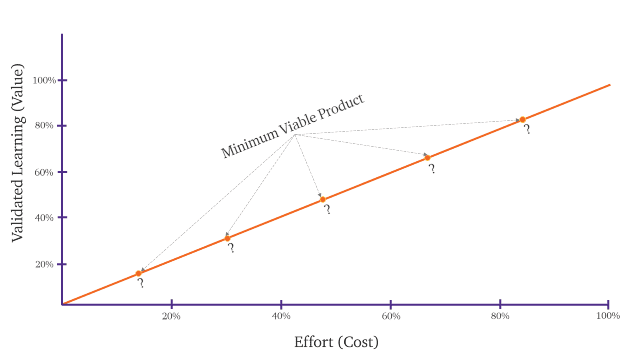
The Approach
By that time, I was sitting on the barstool staring at the second shot of bourbon in front of me. Without any further delay, Vilfredo Pareto came to my help, to fill the missing puzzle in the equation, with his 80–20 rule.
In my experience of building software products for more than 15 startup companies, I was able to quickly reason out that the least valuable first launch of a product should be built at ~20% of the overall budgeted cost (the effort) to collect ~80% of the value (the validated learning about the customers), as depicted in Pic. 3.
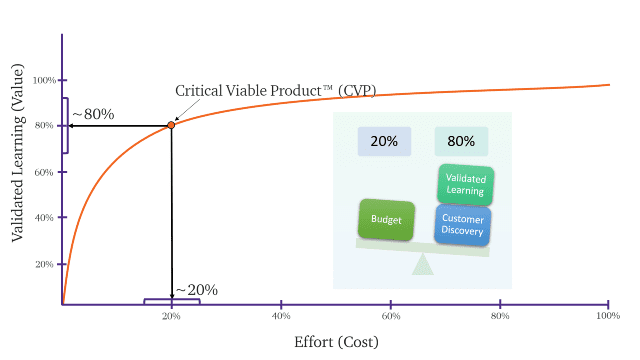
That prompted me to conclude that the least valuable first launch should follow a Critical Viable Product building approach — a software development technique to build a version of a new product which allows a team to collect the critical amount of validated learning about the customer with the optimized effort.
For example, If you are building a product for Crowd Funding, you might be interested to learn about your customer to understand the geographical area, age, Education and Income group, majority of them belong to and their interests, etc. (probably not, but you get the point). CVP will let you define the product features and build them with only 20% of your budget, but you pretty much get to know about your customer about 80% of what you want to know. So based on those learning, you got 80% of your budget left over to maneuver with, to build the product right for your target customers.
The Solution
Having the approach in hand, how can you find that sweet spot of getting 80% of the value from 20% of the cost?
That can be solved by mashing up the below prioritization techniques and apply it to each of the product features on the product backlog.
Step 1
The first step is to independently evaluate each of the product features by analyzing the value you get out of it and the cost you will have to spend. Upon completion, you should be able to roughly plot something like in Pic. 4.
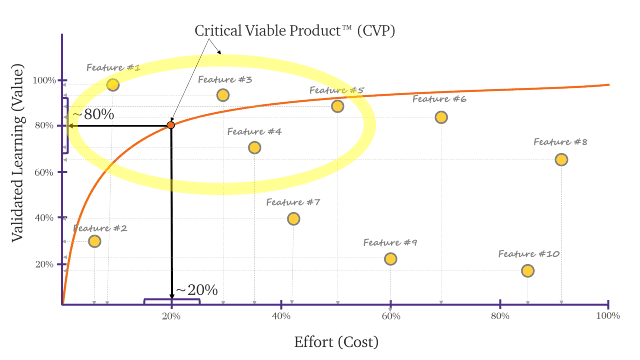
Step 2
The second step is to apply the lean prioritization technique (Pic. 5), to identify the product features which require only ~20% or less effort which is capable of producing a value of ~80% or above.
- Lean Prioritization — Performing Value and Effort analysis for each product features
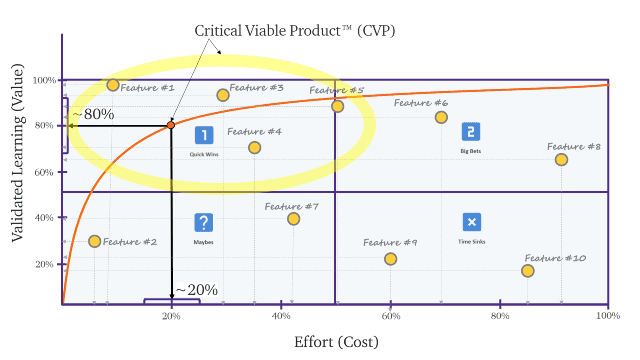
Step 3
The third step is to superimpose the below prioritization techniques on top of Lean Prioritization (Pic. 6), so you can evaluate and make adjustments as required.
- MoSCoW — Classifying the product features as Must have, Should have, Could have, won’t have
- Eisenhower Decision Matrix — A method used to prioritize tasks based on urgency and importance.
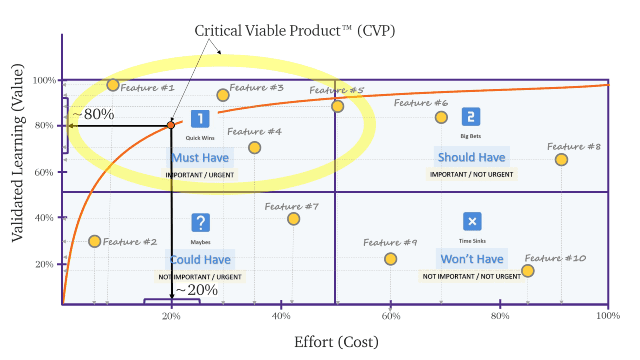
By performing the above 3 steps and choose to build the — Quick Wins, Must have and Important / Urgent features (the top left of the matrix) — , you should be able to build a complete Critical Viable Product with overall the ~20% optimal effort to get the required ~80% critical amount of validated learning.
This strategy has worked well for 3 of our clients in a row. They were largely successful in taking the CVP to the market to measure the validated learning and create a quantitative value proposition for their investors.
